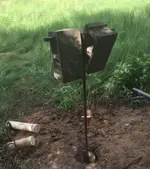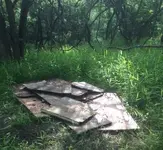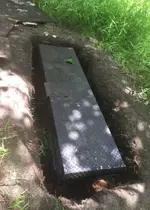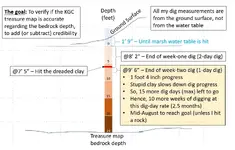barnhse
Full Member
Yes, the land and other location factors make whole a lot of sense based on my research.
Regarding my research of the land, I must say that Google is my friend.
The marsh has changed a LOT since when the safes were allegedly buried.
I used Google Earth map "overlays" to help me see those changes.
On a Google Earth map, I overlaid the current way the marsh looks today with a 1910 topographical map image, and also a 1958 topographical map image (both found by using Google and cutting/pasting to Microsoft Paint).
In Google Earth, the overlays can be resized, moved around, and made semi-transparent so you can see the maps right on top of each other. (a pleasant surprise to me)
This showed me clearly and without just eye-balling, some of the inaccuracies in the 1910 topo map, as well as when the marsh changed until it looks like it does today.
So when I am out there I know why some hills are there now (man-made changes for the most part),
and why other hills that were there before are gone (mainly due to water flow changes).
And I can see the land in wintertime from above without the tree leaves covering up the landscape.
All this is really cool.
This also helped me find where the original road was located (it's gone now) that the wagons would have had to use.
And to find the most likely places where they would have unloaded the wagons (based on the story).
My thinking was that they could not have hidden the gold too far away from there!!!
The treasure map is hand-drawn, without much detail at all, and without any compass headings.
So I needed all the help I could get!
If the story and treasure map are based on facts, the author probably made the map vague on purpose, in case the map fell into the wrong hands.
Or, if the story and treasure map were made up, then the author probably made it vague so it would match many places in the area.
Other research I did on the land was:
1. Contacted the historical society of the closest town. Nice ladies, but no help for me.
2. I even ordered a fiction book of the area circa the Civil War time period hoping to find some insight, but didn't. Oh well, it was fun to read anyway.
3. Read any wiki page I thought might help. No help for me finding the target location, but that exercise helped me a lot when I talked with the local historical society ladies.
4. Emailed folks here on TreasureNet.
5. Spoke to old guys (like me) in town about the land and any history of it that they might know of. I did not mention any treasure to them. Ha.
Regarding my research of the land, I must say that Google is my friend.
The marsh has changed a LOT since when the safes were allegedly buried.
I used Google Earth map "overlays" to help me see those changes.
On a Google Earth map, I overlaid the current way the marsh looks today with a 1910 topographical map image, and also a 1958 topographical map image (both found by using Google and cutting/pasting to Microsoft Paint).
In Google Earth, the overlays can be resized, moved around, and made semi-transparent so you can see the maps right on top of each other. (a pleasant surprise to me)
This showed me clearly and without just eye-balling, some of the inaccuracies in the 1910 topo map, as well as when the marsh changed until it looks like it does today.
So when I am out there I know why some hills are there now (man-made changes for the most part),
and why other hills that were there before are gone (mainly due to water flow changes).
And I can see the land in wintertime from above without the tree leaves covering up the landscape.
All this is really cool.
This also helped me find where the original road was located (it's gone now) that the wagons would have had to use.
And to find the most likely places where they would have unloaded the wagons (based on the story).
My thinking was that they could not have hidden the gold too far away from there!!!
The treasure map is hand-drawn, without much detail at all, and without any compass headings.
So I needed all the help I could get!
If the story and treasure map are based on facts, the author probably made the map vague on purpose, in case the map fell into the wrong hands.
Or, if the story and treasure map were made up, then the author probably made it vague so it would match many places in the area.
Other research I did on the land was:
1. Contacted the historical society of the closest town. Nice ladies, but no help for me.
2. I even ordered a fiction book of the area circa the Civil War time period hoping to find some insight, but didn't. Oh well, it was fun to read anyway.
3. Read any wiki page I thought might help. No help for me finding the target location, but that exercise helped me a lot when I talked with the local historical society ladies.
4. Emailed folks here on TreasureNet.
5. Spoke to old guys (like me) in town about the land and any history of it that they might know of. I did not mention any treasure to them. Ha.
Last edited:









